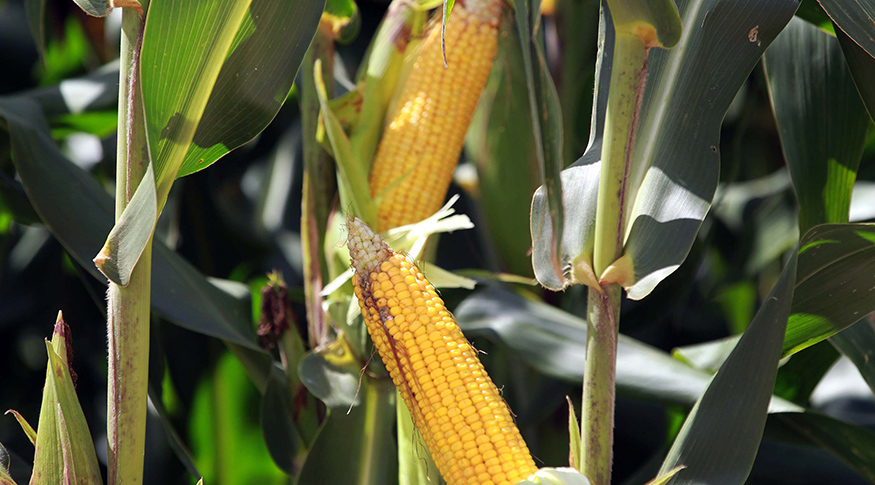Agricultural production
May estimate points to record harvest of 263 million tonnes in 2022
June 08, 2022 09h00 AM | Last Updated: June 10, 2022 12h00 AM

The national harvest of cereals, legumes and oilseeds is expected to reach 263.0 million tonnes in 2022, according to the May estimate of the Systematic Survey of Agricultural Production (LSPA), released today (8) by the IBGE, Against the previous estimate, released last month, output must increase by 0.6%, that is, by 1.5 million tonnes. Harvest in 2022 is expected to exceed that of 2021 (253.2 million tonnes of grain) by 3.8%.
According to the IBGE agriculture department manager, Carlos Alfredo Guedes, the results of milk, wheat and soybean account for this estimate increase. “The output of milk will probably hit a new record. Harvesting of corn-2nd crop has just started and favorable wheather conditions add to this scenario, mainly in Mato Grosso and Paraná, which are the main producers of this graon,” Mr. Guedes explains. The 2nd crop accounts for 77% of the Brazilian output of this cereal.
Corn, both crops considered, should amount to 112.0 million metric tons. That means an increase of 0.1% against the previous month and of 27.6% against the amount produced last year. Delay in sowing and the scarcity of rain led to a strong decrease in grain production in 2021, but that is not supposed to take place this year. Among the states recording biggest increases in corn-2nd crop from the output in 2021, are: Paraná (178.3%), Mato Grosso do Sul (80.9%), Mato Grosso (17.1%) and Goiás (9.9%).
“Soybeans, whose harvest is virtually over in the main producing states, is expected to reach 118.6 million tonnes. As the main product exported by Brazil, soybean had its crops affected dy the drought in southern states, in some areas of Mato Grosso do Sul and in São Paulo. Climate products caused the output of soybean to fall 12.1% from that in 2021.
“Soybean was planted at the right time, but there wasnt enough rainfall in major producing states in November, December and January. That had a major effect on production. In Rio Grande do Sul, for example, the production of soybeans fell 55% from last year; in Paraná, 38.7%.” Despite the production decrease, soybean remains as the most relevant grain in the group, accounting for 45.1% of the total.
Rice is another crop with decrease in output compared to last year. The output of this cereal must hit 10.6 million tonnes this year, with a decrease of 8.4% against what was harvested in 2021. “The decrease is related to rainfall scarcity in Rio Grande do Sul, s state that accounts for about 70% of the production of rice in the country. Although it is an irrigable crop, producers had to ration irrigation water. Such scarcity led to an output decrease of 10.4% from 2021,” mr Guedes explains, as he adds that the amount of rice produced must be enough to supply the country’s domestic demand. Altogether, rice, soybean and corn represent 91.7% of the national output of grain.
Another important product for Brazilian families is beans, whose production is expected to reach 3.2 million tonnes this year. The increase from 2021 totals 2.0%. “Wheather-related probles in the South Region affected the 1st crop. With reduced supply, prices rose and producers had to expand the planting area for the 2nd crop. So there is significant increase in production,” the researcher explains. Beans must also be enough for the domestic market.
Wheat output must increase by 13.6% against 2021
Besides corn, another crop expected to have a record harvest this year is wheat. The production of this winter cereal was estimated at 8.9 million tonnes, with an increase of 12.1% in relation to the previous estimate and of 13.6% in comparison with last year. “The war between Ukraine and Russia, two major producers and exporters of wheat, the prices of this product recorded increase. That led Brazilian producers to expand planting areas. If wheather conditions are favorable, there mus be a record output in 2022,” says Mr. Guedes. He adds that, in spite of this possibility, Brazil will still have to import the product, once domestic consumption is about 12 million tonnes.
In the case of coffee, the estimate is 3.2 million tonnes, a drop of 3.7& against the previous month and an increase of 7.8% from last year. There are two types of coffee: canephora, whose production is expected to reach 1.1 million tonnes and arabica, which must reach 2.1 million tonnes.
In 2022, the harvest of coffea arabica is at its positive biennial cycle, when there should be a significant increase in production. “Wheathere-related problems last year affected the production of coffee, such as frosts in important producing areas,” the researcher says. Minas Gerais, which accounts for 69.7¨% of the total production of coffea arabica, faced a decrease of 8.9% against the previous estimate.
Three Major Regions recorded increases in May
Production increased above the April estimate in the South (1.5%), Southeast (2.7%) and Northeast (1.0%). The North remained stable (0.0%), whereas the Central West recorded a decrease of 0.4%.
In comparison with the amount produced last year, the Central West must have an increase of 11.3%, and amounted to 129.7 million tonnes, representing 49.3% of the total amount produced in the country. In the same comparison, production of grain in the Southeast must increase 14.4%,with 2.1 million tonnes ((10.7% of the total in the country).
With a total 25.6 million tonnes, the Northeast is expected to produce 11.0% more than in the previous year, and it accounts for 9.7% of the national output of grain. In the North, the expected production is 12.9 million metric tons, with an increase of 5.2% against the amount produced in 2021. For the South Region, there is an estimated drop of 13.2%, which amounts to 66.7 million tonnes (25.4% of the total in the country).
Mato Grosso remains as the biggest national producer of grains, with a share of 30.1%, followed by Paraná (13.9%), Goiás (10.7%) and Rio Grande do Sul (9.3%).
Stock capacity grows 1.5% in the second semester of 2021
Also released today (08) by the IBGE, the Survey of Stocks recorded an increase of 1.5% in the available storage capacity in Brazil in the second semester of 2021 against the previous semester, reaching 183.3 million tonnes. Mato Grosso keeps the largest storage capacity in Brazil, with 45.5 million tonnes. It is followed by Rio Grande do Sul and Paraná, with 34.6 and 32.7 million tonnes of capacity, respectively.
Concerning the types of storage, the survey showed that the silos still prevail, with 92.5 million tonnes (50.4%) of the total storage capacity. They are followed by automated and bulk warehouses, which hit 68.6 million tonnes of stoarge capacity, and conventional, temporary and inflatable warehouses, with 22.3 million tonnes.
As for the stocks of the five main agricultural products in storage units, corn accounted for the biggest volume (16.9 million tonnes), followed by soybean (7.7 million), wheat (6.4 million), rice (2.4 million) and coffee (1.1 million).
Sobre o LSPA
Launched in November 1972 aiming at addressing the demand of users for monthly short-term statistical information, the LSPA provides estimates of planted area, harvested area, amount produced and average yield of products selected based on criteria of economic and social importance for Brazil. It does not only monitor each crop investigated in the calendar year of reference, from the intention to plant up to the end of the harvest, but also presents the forecast for the coming year, with surveys in the months of October, November and December. See available data at Sidra.
About the Survey of Stocks
The survey, which encompasses the entire country, aims at providing statistical information about volume and spatial distribution of stocks of basic agricultural products, as well as of the units where they are stored. The data raised by the Survey of Stocks are key to public and private managers and are related to food security issues. The information is provided by owners, expert employees or accountants of the establishments surveyed and is answered face-to-face, through telephone, email or online. The results are released every semester.



















